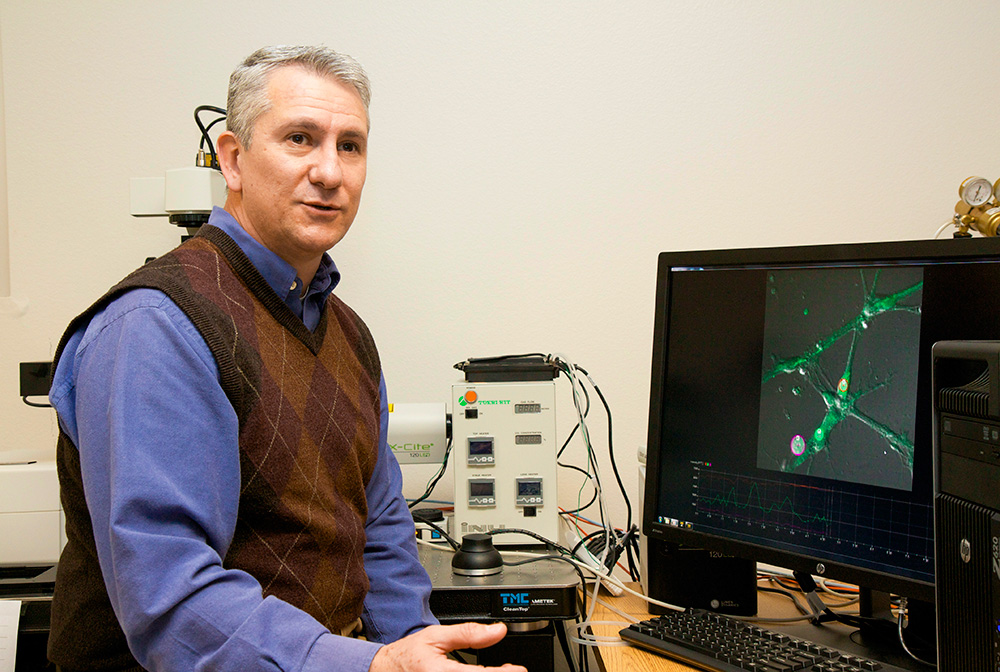
A journal is retracting a paper linking radio waves from cell phone towers to pain in amputees, despite objections from the authors.
“Anthropogenic Radio-Frequency Electromagnetic Fields Elicit Neuropathic Pain in an Amputation Model,” originally published Jan. 16, 2016 in PLOS ONE, suggested that rats with injured nerves experienced pain when exposed to the type of electromagnetic radiation emitted by cell phone network towers. A press release issued by the University of Texas at Dallas (UT-Dallas) — where the corresponding author Mario Romero-Ortega and two co-first authors are based — said that this phenomenon has been reported anecdotally by people missing limbs.
But the study, especially its methodology, met with immediate criticism in the article’s comment section. PLOS ONE noted in March 2016 that the authors had contacted the journal regarding an error in some of the exposure levels reported in the study, which journal staff were “looking into.” In December 2016, the journal told the authors it was going to retract the paper. Now, more than one year later, it finally has.
Ken Foster, a professor at the University of Pennsylvania who commented in February 2016 that the paper was “hopelessly flawed,” told us:
I’m surprised it took PLOS ONE that long to retract the paper, since it’s a clear black and white case of erroneous science. This is not a simple matter of different interpretations. The radio frequency equipment is demonstrably incapable of what they were using it for.
Errors and inconsistencies
The retraction appears nearly two years after readers first raised concerns about the findings, including some calls for retraction. In addition to Foster, several other researchers posted comments raising concerns about the study, including a trio of scientists from Aalto University in Finland, who said the article’s “many inconsistencies undermine the main conclusions.”
In the notice, published Jan. 5, the journal editors highlighted the problems identified by the commenters:
The authors agree that the temperature data in the published article are not valid, and they conducted additional experiments post-publication in an effort to address the dosimetry concern. However, the PLOS ONE editors determined that in light of the above issues the integrity of the published article is compromised, and the further work needed to address the dosimetry and temperature measurement errors and their impact on the conclusions drawn would necessitate full review as a new submission. For these reasons, we retract this published article.
The editors added that they had contacted the authors about the retraction and that all of them:
expressed that they do not agree with the retraction.
The authors have not yet responded to our requests for comment.
The paper has not yet been cited, according to Clarivate Analytics’ Web of Science , but it did receive some media attention, including coverage by the Daily Mail and Extremetech.com (which ran a skeptical take).
We asked the publisher about the timeline, including whether it ever considered issuing an editorial expression of concern for the paper while the journal was looking into the findings. David Knutson, a spokesperson for PLOS, told us:
The concerns about the article were posted via a comment shortly after publication and were available for readers while we evaluated the issues raised.
Still, he noted that online comments are not formal notices from the journal. Even though the journal initially decided to retract the paper in December 2016, the authors said they were in the midst of trying to replicate their study, the outcome of which might justify correcting the paper, rather than retracting it outright. Knutson said the journal hesitated to add a formal editorial notice during that time because:
We felt that the authors’ evaluation should first be completed before taking further formal steps.
Knutson told us that the authors submitted the results of those additional studies in February 2017, and asked the journal to reconsider its decision to retract the paper. However, said Knutson, “the newly conducted experiments failed to replicate the original data:”
The staff editors carefully considered [the authors’] request, and again consulted an Editorial Board member, but decided to uphold the retraction decision.
Like Retraction Watch? Consider making a tax-deductible contribution to support our growth. You can also follow us on Twitter, like us on Facebook, add us to your RSS reader, sign up on our homepage for an email every time there’s a new post, or subscribe to our daily digest. Click here to review our Comments Policy. For a sneak peek at what we’re working on, click here. If you have comments or feedback, you can reach us at [email protected].